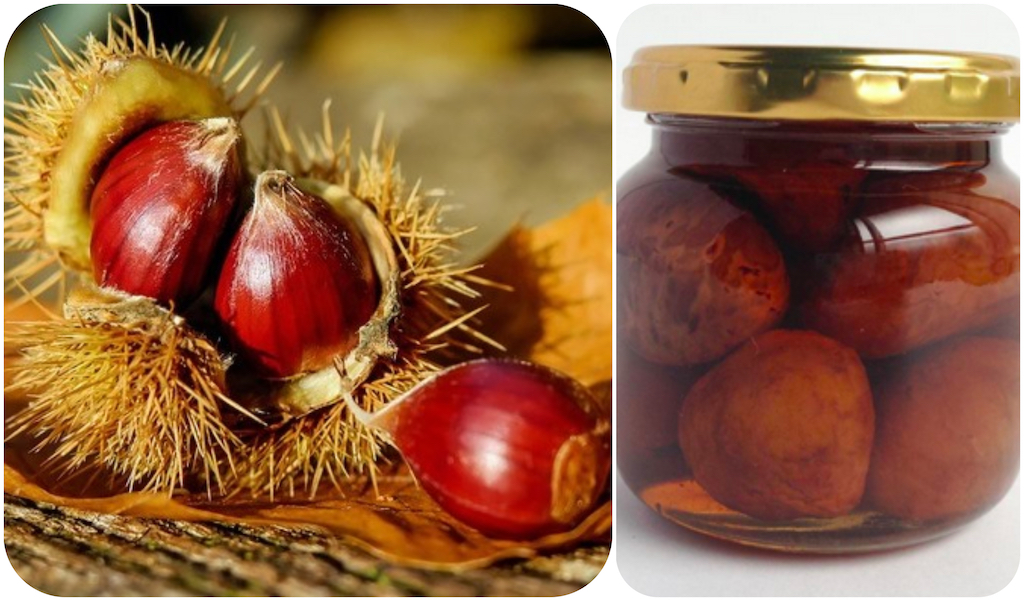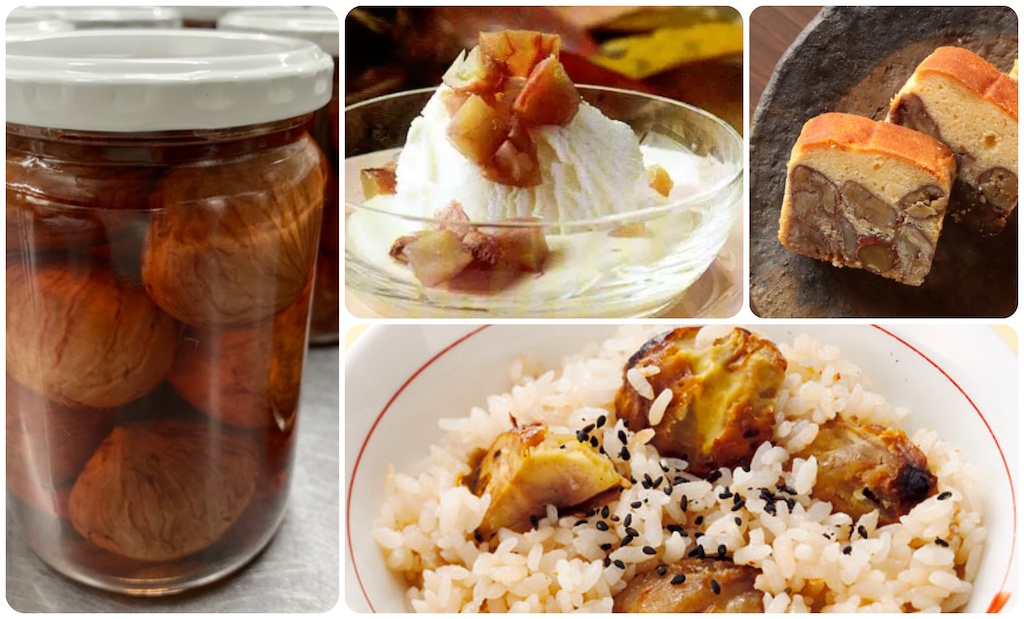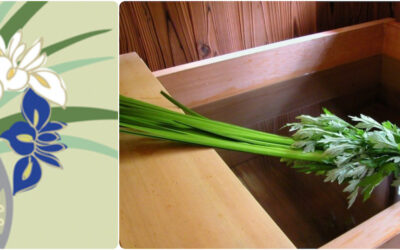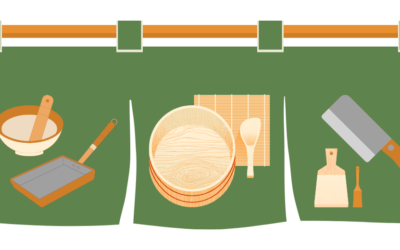
Sugar-Stewed Chestnuts
栗の渋皮煮 Shibu Kawa Ni
Shibu Kawa Ni is what the Japanese call sugar-stewed whole chestnuts that are only partially peeled – their slightly bitter, inner skin being kept intact. The resulting glossy brown globes are delightfully complex in flavor and texture: the nuts are rich and meaty with just a hint of bitterness. Enveloped in sweet syrup mellowed with a tinge of salty soy sauce they’re terrific with tea or coffee.
Chestnut chunks can stud pound cake or be spooned over ice cream (vanilla bean is my choice, though coffee ice cream is also good), Whole nuts, and/or bits and pieces, can even be used to make a variation on the classic chestnuts-and-rice dish known as Kuri Gohan.

DOWNLOAD recipe for Shibu Kawa Ni




